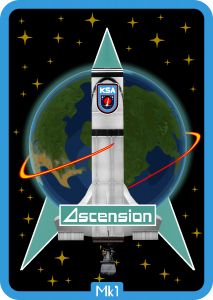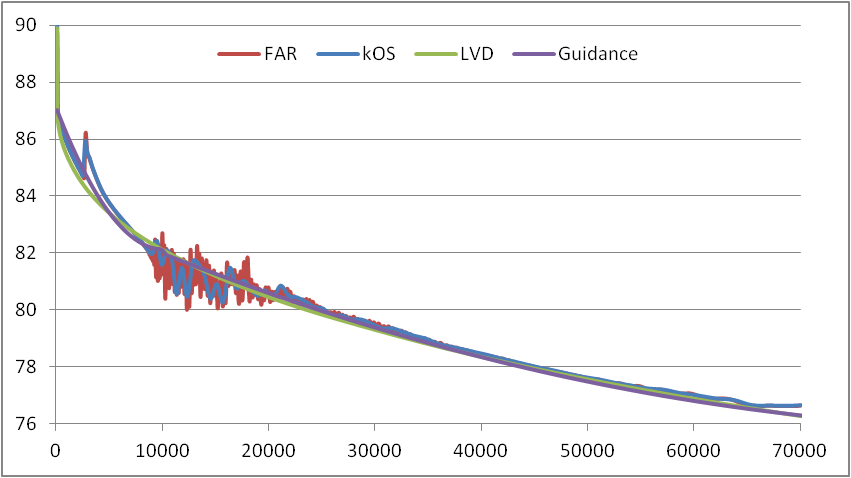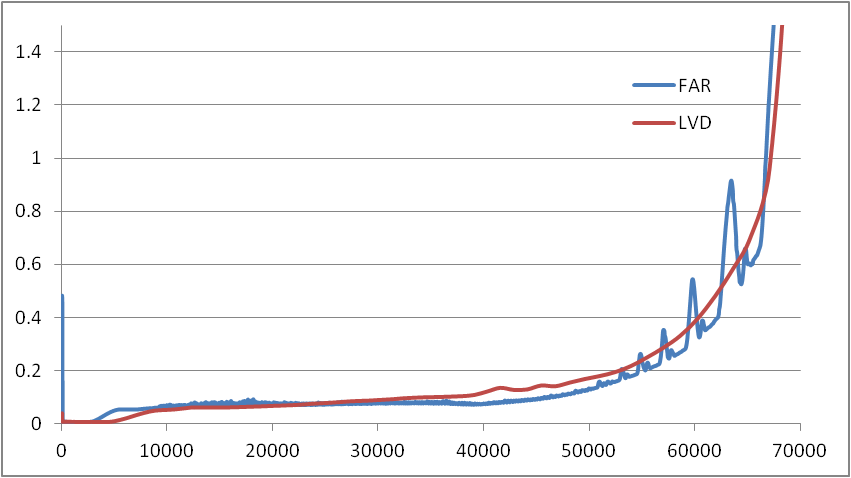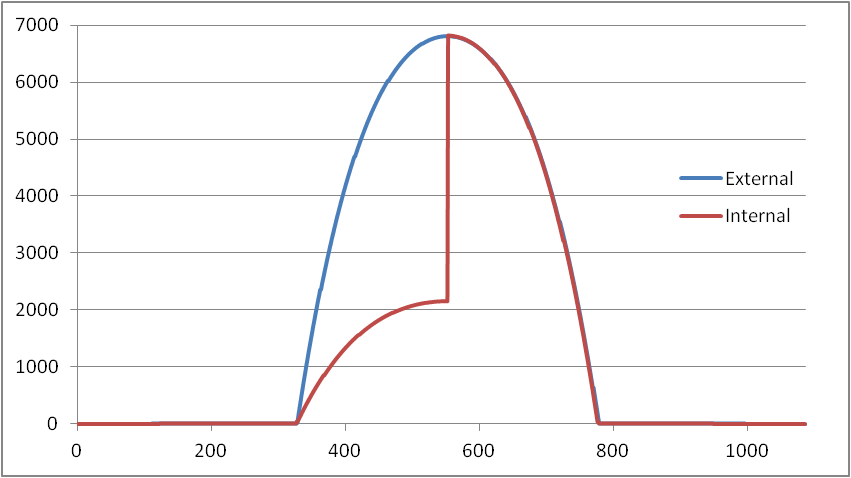 To continue to test science instruments the unkerbed Mk1-A capsule made its 4th flight up into space, adding data on to the studies began with a similar mission back in 2019. This time however the trajectory was tweaked to send the rocket higher and also carried Mystery Goo samples, the largest batch to date. Additional mission objectives included the technology demonstration of dish antenna for high-gain data transmission/reception and the capsule carrying internal shielding to help lower the amount of radiation that reaches the crew. The mission was scheduled to launch in the middle of the day cycle to ensure that the inner radiation belt was pushed closest to the surface by the kerbolar wind so the rocket’s trajectory would penetrate as deep as possible. No issues came up in the preparation for launch, the rocket was successfully rolled out to the pad and dish comms tested before being raised vertical for a wet dress rehearsal. The day of launch the rocket was lowered again for late onload of the Mystery Goo samples, as they are highly radioactive and would have presented a danger to pad crew during the rollout and WDR.
To continue to test science instruments the unkerbed Mk1-A capsule made its 4th flight up into space, adding data on to the studies began with a similar mission back in 2019. This time however the trajectory was tweaked to send the rocket higher and also carried Mystery Goo samples, the largest batch to date. Additional mission objectives included the technology demonstration of dish antenna for high-gain data transmission/reception and the capsule carrying internal shielding to help lower the amount of radiation that reaches the crew. The mission was scheduled to launch in the middle of the day cycle to ensure that the inner radiation belt was pushed closest to the surface by the kerbolar wind so the rocket’s trajectory would penetrate as deep as possible. No issues came up in the preparation for launch, the rocket was successfully rolled out to the pad and dish comms tested before being raised vertical for a wet dress rehearsal. The day of launch the rocket was lowered again for late onload of the Mystery Goo samples, as they are highly radioactive and would have presented a danger to pad crew during the rollout and WDR.
The Flight
Just prior to engine ignition in the new AFCS pre-launch procedure the fins all swiveled through their full range of motion to test hydraulic pressure – if they fail to re-center before ignition time of T-6s then pressure is low. Engine ignition was permitted and the K2-X fired up without issue at 10% initial thrust to check chamber pressure for 3 seconds before throttling up to launch TWR of 1.2 (~75% throttle). Launch thrust was confirmed at T-0, allowing the engine clamps to release and enable the rocket to begin its journey up into space at 17:30:00.74 local time. Another 3 seconds into the flight the rocket climbed above the service towers and the engine was brought up to full power, producing 172kN of thrust.
Unlike previous launches where the nose was held close to 90° until clearing the towers, this time the rocket was commanded to immediately pitch over towards 87° so when you look at the launch photo you can see the fins already slammed to their limits in an attempt to get the nose to move. In addition the engine was mounted at an 0.0093° angle that would give it some extra nose-down pitching movement. Once clear of the towers the guidance program kicked in to begin phase one of the ascent profile, which would see the rocket nose over aggressively from 87° to 82° during the first 10km.
During this part of the ascent the rocket passed through Mach 1 and went supersonic at L+41s while climbing through 5.6km ASL. The next major event was Max Q, which was reached at 8.832km with a pressure of 32.179kPa as the mission clock reached L+50s. Some minor roll-shake began to develop shortly afterwards as the rocket reached 10km and switched over to phase two of the ascent profile, which would see a less-aggressive pitch over from 82° to 77° the rest of the way up into space.
Despite the ongoing roll-shake, which lasted to some extent through the remainder of powered flight, the rocket held well to its programmed pitch and heading as it continued to power up at full thrust, passing 1km/s in velocity (relative to the surface) at L+1m22s while traveling through 30km at which point full thrust equaled max thrust of 195kN. Apokee was already up past 70km and climbing fast. Air friction caused minor surface heating from 30-40km but did not disrupt communications or damage any external instruments.
As the fuel drained from the main tanks the rocket’s center of mass was shifted downwards ever so slightly, which is another reason the engine was angled – this kept the center of thrust through the center of the vehicle late in the ascent when the guidance fins had less authority to guide the nose along the proper pitch angle. This allowed us to burn the engine late into the ascent, in this case just out of the atmosphere when MECO arrived at L+1m52s just 1 second after reaching space. While pitch was held well, the rocket did yaw to the side slightly as it exited the atmosphere on a heading of 79° (instead of 90°) with a rate change of ~0.14°/s. Thankfully this had no major impact on the mission trajectory and RCS was able to stabilize the rocket without issue.
Shortly afterward at L+1m56s the Launch Escape System was prematurely decoupled from the command pod by the flight computer as it was purging ascent instructions and preparing to load operations for the remainder of the mission. This was unfortunate as we did have plans for it later in preparing for re-entry but it was also not a mission-critical aspect. While we are unsure if the LES also fired its motors when decoupling, even if it just popped off and began to drift nearby both dish antennae and the magnetometer boom were not yet extended in the way.
By L+2m4s the high-gain dish antennae were both deployed and establishing connection with the Tracking Station while the magnetometer boom began to unfold and the capsule hatch was opened to allow the Radio Plasma Wave Science instrument to extend its own antennae. One of the Mystery Goo containment units was cycled open to begin exposing its samples to the harsh space environment.
Passing 250km and out of Low-Kerbin Orbit at L+3m52s the currently-open Goo canister was cycled closed while the opposite one was cycled open to present a fresh sample which would be exposed both inside and outside the inner radiation belt. The RPWS and magnetometer boom continued to collect data, which was transmitted back in real-time over a 9kB/s connection via the energy-sucking high-gains while controllers kept a close watch on power levels.
The rocket continued to coast upwards, the radiation sensor constantly monitoring and waiting for the uptick in rad levels to begin, which happened at L+5m28s while passing through 342km. This triggered the RPWS to stow its antenna and the hatch to close, blocking the internal radiation sensor and allowing the shielding to have full effect during the remainder of the climb through the belt up to apokee. Both the magnetometer and Goo samples remained active to collect science data.
Apokee was achieved at L+9m13 when the rocket reached 426.149km. This may have been the center of the belt – levels plateaued at 6,816mRad/hr external and 2,155mRad/hr internal just before the rocket reached apokee and began to fall off immediately thereafter, although past missions have also recorded stronger radiation levels. The shielding testing ended at this point and the hatch was opened once again, this time allowing the Gamma Ray Spectrometer to extend its boom and gather data.
Since the flight computer made note of the time it entered the belt, after passing apokee it could use the same amount of time to determine when it would exit the belt (assuming we had planned the launch properly to bisect it evenly). So after half of that time expired at L+11m6s the GRS was stowed and the RPWS again deployed so each instrument would get time collecting data from inside the belt. Despite the hard levels of radiation, the flight computer, which was also shielded inside the capsule, continued to perform nominally.
342km was the altitude again when the rocket exited the inner belt at L+12m59s, with radiation levels returning to their normal background rate of 13mRad/hr. This means we indeed did a near-perfect slice up through the belt! This triggered the RPWS to swap with the GRS one last time, since the RPWS had exposure time during the trip up to the belt.
Passing back down below 250km into LKO at L+14m35s the Goo canisters were again swapped so the first sample would continue to only be exposed to normal background radiation levels while the higher sample was given time in a shielded environment to begin to recover. Throughout the entire mission so far the RCS had been keeping the rocket’s tail pointed towards KSC for data transmission, which also pointed the capsule radially away from the trajectory for the upcoming separation from the lift stage.
Preparation for re-entry began at 150km with the rocket already falling back down slightly faster than 1.5km/s and increasing, which left only ~45 seconds for the GRS to retract and the hatch to close, the Goo canister to seal up tight, the capsule to separate from the lift stage (done while the GRS and Goo were shutting down), push far enough away with the RCS (since the LES, which would have done a better job, was no longer available) so that the lifter stage would not come crashing into the capsule on re-entry (hopefully) and then flip over retrograde to present the heat shield to the planet. Confirmation that all this was completed came a comfortable 14 seconds prior to reaching the top of the atmosphere at L+16m36s, at which point the capsule went into a roll to maintain even heating on the radial Goo canisters.
As the capsule plummeted through the atmosphere the heat from the shockwave created a plasma that cut off radio communications at L+16m49s, after which the capsule fell below the horizon from KSC. Heat shield temperature peaked at 1909.4K (2,977.25°F/1,636.25°C) with the capsule surface recording 1184.9K (1,673.15°F/911.75°C) while the internal capsule temperature remained 296K (73.13°F/22.85°C). External pressure reached a maximum of 123.927kPa at 13.979km and the G load reached a maximum of 18.744. The flight computer eventually detected a safe speed to begin deploying the parachutes and popped them out at 8.728km ASL, after which they fully extended to arrest the fall to ~9m/s at just 55.871m above the water. The capsule splashed down safely at L+18m7s, 128.503km downrange after traveling 978.866km, although saving mass with lighter chutes almost lost us the capsule with such a close slow-down.
Flight Analysis
Multi-Phase Ascent Guidance
For the first time we had Launch Vehicle Designer optimize an ascent profile that would get the rocket to the highest possible altitude. This can be seen here, with the event queue listing several “Ascent Profile” events which let the optimizer adjust steering values over time. All past missions were based around a gradual ascent profile curve that worked with a single quadratic fit formula, but the result given for optimal ascent required a larger pitch-over in the beginning followed by a shallower pitch over later, as seen in this plot. In order to make this work we had to use two separate quadratic fit functions and switch between them during the flight, which was done without issue. Overall though guidance problems remain:
The LVD plot is the path that was optimized for best ascent. The Guidance plot is the path that the rocket should have flown to follow the quadratic fit formulae (which were made to fit the LVD profile as close as possible). The FAR data is from internal data collected from onboard sensors at a high rate while the kOS data was what was beamed back to launch control at a lower rate.
First off we should have broken down the phase one 10km ascent itself into two phases to better match the Guidance/LVD, but the rocket was unable to fly the initial LVD profile anyways since it did not pitch over as aggressively off the pad as we hoped it would. Even with the engine offset there was not enough thrust to make the nose tip nor enough speed to allow the control surfaces to be effective.
The relatively large pitch change at ~2.5km is a recurring guidance issue that we have still not nailed down in the PID system. You can then see the rocket struggling to maintain proper pitch as the turbulent air flow through the thicker lower atmosphere makes the guidance fins flutter. Eventually things smooth out although the rocket still fails to properly follow the Guidance, staying 0.1°-0.4° off nominal trajectory.
Improved Drag Coefficient Modeling
The latest version of LVD allowed us to import Cd values from past missions for the first time. Rather than having to take the time to build up the Cd values by hand, the import let us use vastly more data points for finer modeling during ascent.
The first deviation where flight data shows a higher Cd than LVD is from the LVD data being based on past flights that did not turn so hard in the beginning and thus created less drag. Moving higher we see the roll shake kick in as the rocket fins make minute adjustments to attempt to hold course and pitch as best as possible. These fin adjustments are forced to become larger and larger as the rocket climbs due to decreasing atmospheric pressure lowering the effectiveness of the guidance fins.
Overall while the differences in the plot appear to average out, despite the main burn lasting 1.6s longer than planned the apokee was still 40km shorter than planned so significantly more drag was created than predicted. So while the ability is there for improved drag modeling, our Cd data itself still needs work.
Radiation Levels & Shielding
You can clearly see where the hatch was closed then opened during the trip through the inner belt. The shielding in the capsule reduced the radiation exposure by 68% and did so continuously – increased exposure did not decrease shielding effectiveness. It is worth noting however that this type of shielding was meant for the radiation of the belts and not for large kerbolar storms that can occasionally belch off the sun and are a completely separate issue for deep space travel.
Although levels did plateau shortly before reaching apokee you can see there are several instances of these brief stable zones and the capsule just happened to hit one at the highest point of its trajectory. We certainly know from past flights that at higher altitudes the radiation levels can reach as high as 10,000mRad/hr.
Power and Data Management
The most complicated aspect of this mission was ensuring that the rocket could power all the science instruments and also transmit back all the science data without having to resort to massive onboard storage that would add weight and also increase the chance of corrupted data due to the radiation exposure. Drew Kerman has a great twitter thread explaining the process that went into designing the power and transmission elements to meet the demands of the science equipment that was carried onboard.
The capsule returned under its own battery power, 11% of which remained after it dropped the lift stage and the main battery bank. The capsule battery should have really been kept disconnected until this point, but it landed with 9.5% power remaining so this was not a big issue. Had the battery been disconnected the main battery bank would have had 96EC remaining which means we overestimated our power consumption needs by a whopping 211EC, which is likely due to the large estimation we gave to the power usage of the flight computer based on past missions but also from the time it took to swap instruments whereas planning assumed they were running immediately upon swaps.
LES Anomaly
It took a lot of time and effort to trace down this fault but eventually we were able to replicate it. Thankfully the timing of the event coinciding with the instruction purge from the flight computer was an obvious clue we were able to quickly latch on to and begin our investigation to confirm that was the root cause. While there will need to be a minor hardware redesign for the flight computer we are confident we can eliminate this issue from future missions.
Future Plans
Lessons learned from the optimized ascent and use of FAR drag data will be applied to future missions. We already made some improvements in our latest Mk1 flight that took place before this report was completed and will provide details in that report as well. We hope to more accurately match the designed ascent profile with rockets that can use thrust vector control from the engines rather than guidance fins, which we plan to debut with the Progeny Mk8.
While the new Mk1-B capsule will not carry any shielding since it is meant to fly only in LKO and thus below the inner belt, future capsules like the Mk2 will make use of the shielding technology that was demonstrated on this flight to protect astronauts at further distances from the planet.










